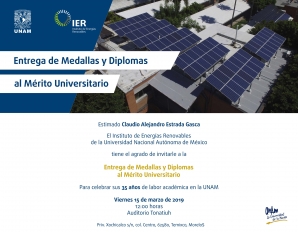Alessandro Gallo, Elisa Alonso, Ricardo Pérez-Enciso, Edward Fuentealba, and Carlos Pérez-Rábago
Abstract
New investigations on solar thermochemical storage and other high temperature process are starting at the University of Antofagasta. A small cavity-type solar rotary reactor will be constructed to develop gas-solid reactions. For this reactor concept, is expected that the most part of the solid reactants will remain in the central sector of the drum. Thus, high temperatures at this area will benefit the process performance. Since the radiation profile feeding the solar reactor could have a significant effect on the temperature distribution, in this work it is presented a numerical model to analyze how the use of different concentrators affects the cavity walls temperature. First, a reference case was simulated with flat profile radiation. Then, a solar simulator composed of an elliptical mirror and a high power lamp and a multi-faceted concentrator were considered for the analysis. Their radiation profiles were obtained by ray tracing simulations and integrated in a CFD model that predicts the cavity temperature. It was found a relation between the flux profile and the temperature distribution. This way, higher temperatures were achieved at the back side of the cavity, where the most part of the radiation impinged. The most homogeneous temperature distribution was achieved for the multi-faceted concentrator case, in which lower differences between the back and the lateral wall were found.
Numerical approach to the flux distribution effect on a solar rotary kiln performance

